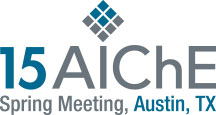

Currently, the demand of companies in order to regard about operational safety is ever increasing in their industrial facilities. In a typical risk management program is essential the identification and assessment of operational risks as a mechanism to manage the likelihood of occurrence and/or impact to undesirable events, especially process accidents. For this issue, two methods can be employed together for the process quantitative risk assessment: the Quantitative Risk Analysis (QRA) and the Risk-Based Inspection (RBI).
The Quantitative Risk Analysis is a technique that is able to determine, for example, the risk that the activity of manufacturing and storage of hazardous materials (flammable and/or toxic) in chemical, petrochemical, oil & gas industries and similar offers to society and employees. For this, the QRA determines the effects that could be caused by an accident related to equipment failure (consequence of failure) and the frequency that this event can occur (likelihood), which combination can result in process safety risk of the analysed component. The societal risk, for example, assesses the estimation of one or more individuals being harmed simultaneously by the physical effects of an accident and it must meet the acceptability criteria required by the regulator and/or by the company by itself.
In the methodology that is commonly employed in an AQR, societal risk is not variable over time because both the likelihood and the consequence are assumed to be constant parameters. However, for the frequency (likelihood), between the various modes of equipment failure, highlight mechanical failures influenced by damage mechanisms (stress corrosion cracking, thinning, fatigue etc.) during service life of equipment, which in this case are time dependent parameters (the failure probability tends to increase over the lifetime). Therefore, it would be reasonable to consider that, for events originated from equipment mechanical failures, the frequency would vary over time and the risk would increase throughout the lifetime of the plant, as already considered in RBI technique.
However, the Risk-Based Inspection supports the management of integrity of static mechanical equipment based on inspection planning which refers for itself to risk factor. So, this methodology includes assessment of the probability of failure of each component evaluated, considering the equipment design, damage mechanisms and the integrity management system adopted by the company, for example. Hence, this technique is capable to measure the increasing of the likelihood of failure caused by the influence of the damage mechanisms.
For these reasons, this technical paper has the objective of suggest an integration of both techniques related to risk assessment (RBI and QRA) to evaluate the influence of the failure likelihood variation in the societal risk with the time. In this case, the likelihood would be calculated by RBI methodology in order to determine and/or refine the failure frequency to the component/systems when the main driver regarding to probability of failure considered in the QRA is damage mechanisms occurring in static mechanical equipment. Therefore, it is possible to evaluate the behaviour of societal risk over time influenced by active damage mechanisms and the influence of preventive actions to reduce the frequency as, for example, periodic inspection. Lastly, it is possible also to compare these results with the societal risk that use the method commonly used for the calculation of frequency in QRA using generic failures frequency databases.
To permit the validation of the methodology proposed, this paper will present the results considering the application of the integrated techniques in an industrial facility responsible for chlorine production localized in an industrial complex in Brazil.
